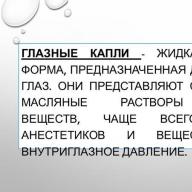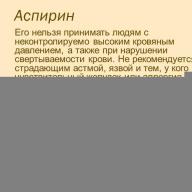Over the past few years, the amount used by people medicines increased significantly. Some of them are available for use in several forms, as well as combinations, which makes it possible to conclude that there are up to several tens of thousands of medicines.
The world of drugs is quite complicated, especially for those people who have nothing to do with pharmaceutical activities. The activity of some drugs is aimed exclusively at certain links in any of several body systems. For example, drugs that are responsible for reducing the amount of cholesterol in the human body work, for example, on this principle.
Varieties of the therapeutic effect of drugs
The therapeutic effect of drugs can be of two varieties - direct and indirect. For example, diuretic drugs reduce swelling by blocking the absorption of water and sodium. Cough medications are responsible for inhibiting the process of excitation of the cough center in the brain. The effect of antibiotics is detrimental to microorganisms.
Once in the human body, a drug must pass a number of barriers. Initially, it is absorbed into the intestine, after which it enters the bloodstream, from where the drug gradually begins to move to the liver. Where subsequently, the drug gradually begins to decompose.
What determines the effectiveness of a drug?
It is generally mistakenly believed that the amount of the drug directly affects the effect of the drug. In fact, what the effect will be is directly affected by the active principle in the drug. For example, the same medicine in different tablets may contain an unequal amount of this onset. As a rule, only a doctor can determine exactly what pills and in what quantity the patient needs to take in order to improve their health condition.
The withdrawal of drugs from the body
Chemical drugs are substances that are foreign to the body, from which he, as a rule, wants to get rid of in the very near future. Some of the drugs are destroyed in the liver. Others are eliminated from the body in its unchanged form - in that in which they entered it. The processes of drug withdrawal from the body can proceed at different speeds. As for the concentration of the drug in the blood, in some cases it can remain high, in others, on the contrary, it can fall off very quickly.
The main condition - the adoption of any medications - they must be prescribed by a specialist. The patient should try as accurately as possible to fulfill all the requirements for the time of their administration, quantity and dose. It is important to streamline your lifestyle. You should learn to alternate between rest and work so as not to overwork much. Also, the patient will have to abandon bad habits associated with smoking and drinking a large amount of alcohol.
And of course, I would like to recall that self-medication can not only not solve the health problem, but also exacerbate it. Therefore, do not risk it, especially the health of your children.
The harmful effect of drugs on human health is a very serious pollution of the body. Mortality from the side effects of drugs that have passed all clinical trials, ranks 5th in the world after cardiovascular, oncology, injuries, bronchopulmonary.
Excessive enthusiasm for synthetics has led doctors to stop using natural products. Education is to blame - universities do not teach this.
Synthetic preparations - chemical tablets are perceived by our body as foreign substances. Doctors know that there are systems in the body that recognize synthetics and remove them from the body.
The use of chemical drugs is shown as an emergency treatment. And when prevention, restoration of the body, removal of the side effect of drugs are needed, natural preparations are needed.
All organs and systems of our body are programmed by nature to use natural rather than synthetic drugs.
The population is aging, and with age it uses more and more chemical drugs. Now we are talking about drug aggression. If, starting from 30-40 years old, people began to use natural remedies for preventive purposes, then at a more mature age less drugs would be required.
In all civilized countries, people live 25-30 years longer than us. They actively use natural compounds, herbs and dietary supplements. Whether they do it right or not, the average life span clearly indicates this.
Doctors are firmly convinced that prescribing a medicine does not need to think about supporting the body with vitamins and minerals. No doctor will ask, but do you get enough vitamins C, B, E?
Medicines are prescribed on the form. But you must remember that the assimilation of the drug in the body is possible only with micronutrients. The doctor does not even know in advance how the drug will act, since it has no idea about the supply of nutrients to the body.
The doctor works according to the scheme - try this, and then this. But this is not a carrot or an apple, but a toxic chemical drug. You can try so that to play in the box.
All clinical trials of drugs are performed under ideal conditions. The animals on which they are tested receive a diet in which, by the standard, there are all the necessary nutrients. And then these drugs are prescribed to people who do not have these necessary micronutrients in the body.
One of the side effects of drugs is their peroxide effect (free radicals are formed - the cause of oncology). Therefore, along with taking medications, antioxidants must be prescribed! So cardiac drugs (calcium channel blockers, beta blockers) enhance peroxidation processes in the heart muscle. This side effect can be reduced by using antioxidants. Manufacturers are silent about this. But the doctor must know!
The purpose of the lesson: Didactic: - the study of the concept of "drugs" and the history of their creation; - give an idea of \u200b\u200bthe classification of drugs and their forms; - identify the dependence of the human body on drugs. Developing: - development of the ability to establish causal relationships between the structure and properties of substances and the vital activity of the body; - find out the effect of various drugs on living organisms and the environment. Educational: - show the practical significance of drugs; - show the results of the work of medical chemistry as a science.
The objectives of the lesson: to acquaint students with the scientific and practical achievements of medical chemistry and pharmacology; introduce students to the problems of humanity that have arisen as a result of uncontrolled production and use of drugs.



The history of the creation of medicines: Hippocrates Claudius ((460 - 377 BC) Galen (129 - 201) Described more than 200 medicinal plants and methods of their use. He is the founder of medicine. He first called on doctors to treat not a disease, and a sick person. He is the founder of "pharmacy science" - pharmacology. He widely used various extracts from medicinal plants, infusing them with water, alcohol, vinegar. In modern medicine, tinctures and extracts are called "galenic preparations."

The history of the creation of medicines: Abu Ali Hussein ibn-Abdallah-ibn Sina - Avicenna (980 - 1037) Central Asian physician of the Middle Ages. He described a large number of herbal and mineral drugs and methods for their preparation. His main work is called “The Canon of Medicine”.

History of the creation of drugs: They are the creators of drugs - vaccines (for example, against smallpox, polio, measles, hepatitis and other diseases). A vaccine - (from the Greek. "Vaccina" - cow) is a liquid that contains weakened microbes and their poisons. Louis Pasteur (French scientist) Eduard Jenner (English physician) - vaccinated smallpox to 8-year-old boy James Fips


Dosage Forms: Liquid Solid Soft 1. Solutions 2. Infusions 3. Decoctions 4. Tinctures 5. Extracts 6. Potions 7. Emulsions 8. Suspensions 1. Powders 2. Granules 3. Tablets 4. Dragees 5. Pills 6. Capsules 7. Mixtures of plant materials 1. Ointments 2. Liniment (liquid ointments) 3. Pastes 4. Suppositories 5. Sterile powders and tablets, dissolved immediately before administration


Antibiotics With Greek. “Anti” is not, “bios” is life. These are drugs that are used to suppress the activity of microorganisms in the human body for a year - A. Fleming discovered penicillin (Penicillum group of antibiotics). More than 6,000 types of antibiotics are known, of which about 100 are actively used in medical practice.

Antibiotic action: Bactericidal (destruction of microorganisms) Bacteriostatic (growth and reproduction retardation of microorganisms) 1. Penicillins 2. Cephalosporins 3. Polymyxins 4. Neomycin 5. Streptomycin 6. Nystatin 7. Amphotericin B 1. Tetracycline 2. Levomycetin 3. Erythromycin 4. Oleand

The effect of antibiotics on the human body: "+" - inhibit the action of pathogens. "-" - cause allergic reactions and getting used to them; - toxic effect on tissues and organs; - dysbiosis, thrush, yeast stomatitis. Attention!!! For young children, the antibiotic gentomycin is absolutely contraindicated! It causes a sharp decrease in hearing.

Analgesics: From Greek. "Analges" is anesthetized. These drugs acting on the central nervous system, eliminate pain in the human body. Analgesics are divided into groups: painkillers and antipyretics painkillers and anti-inflammatory painkillers and narcotic drugs

Examples of analgesics: Analgesic, antipyretic and anti-inflammatory agent "+" - helps with colds, fever and headache; in small doses for the prevention of heart attack and stroke. “-” - stomach ulcer and internal bleeding; - lowers blood coagulation (dangerous during operations); - hearing impairment; - penetration of aspirin asthma; - allergic reactions synthesized by Charles Frederick Gerhardt in 1853; synthesized by Charles Frederick Gerhardt in 1853 Attention !!! It is dangerous to consume aspirin with alcohol.

Examples of analgesics: "+" - similar to the action of aspirin, but does not cause blood thinning; less likely to cause allergies and less irritating to the stomach “-” - in combination with alcohol damages and destroys liver cells; - inhibits the activity of the digestive tract Attention !!! No more than 2 g of paracetamol (4 tablets of 500 mg each) should be consumed per day.
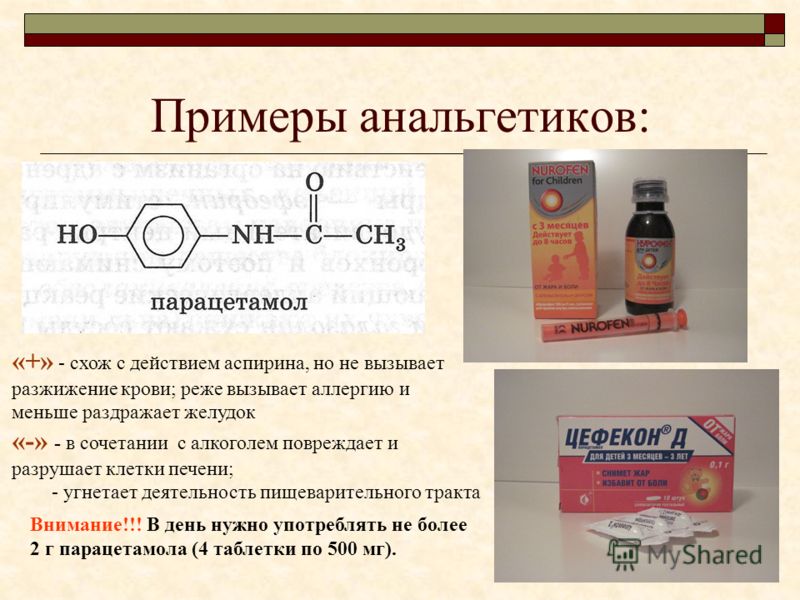
Examples of analgesics: “+” is a cheap pain medication “-” - violation of liver cells; - addictive (analgin addiction - 4-5 tablets per day); - destroys white blood cells - red blood cells, causing blood cancer; - irritating the gastrointestinal tract; - causes acute renal failure (in 10% of patients) Attention !!! Analgin is a prohibited drug in many countries of the world, but in Russia it is still approved and dispensed without a doctor’s prescription. Synthesized by Ludwig Knorr (Hoechst) in 1920; Ludwig Knorr Hoechst in 1920

Narcotic analgesics: These drugs weaken and remove the feeling of pain, and cause a pleasant feeling called euphoria (from the Greek. “Eu” - good, “phero” - to bring). -Man has no unpleasant sensations and experiences, pain, malaise, fears, anxieties, hunger and thirst; sensitivity is lost and loss of consciousness occurs. In 1806, an alkoloid, morphine, was synthesized. It has analgesic and narcotic effects (forms a drug dependence). It is used in operations. Humphry davy

Antihistamines: “+” Antihistamines are prescribed for people who suffer from hay fever (hay fever), asthma, urticaria, dermatitis, allergies. These drugs relieve runny nose, sore throat, coughing and suffocation attacks, severe itching. "-" - cause drowsiness; - causes inhibition of reactions and general weakness of the body. Attention!!! Sedatives are best taken in the afternoon and at night.

Remedies for the common cold: Examples: sanorin, naphthyzin, galazolin, otrivin, etc. “+” - with a cold, the common cold is weakened or stopped, breathing through the nose is restored, the headache quickly passes “-” - narrowing of blood vessels can lead to hypertension; - addictive to the drug. Attention!!! The course of treatment is not more than 5 days. It can not be taken with antidepressants (pyrazidol, pyrendol, nialamide, novopassit, etc.)
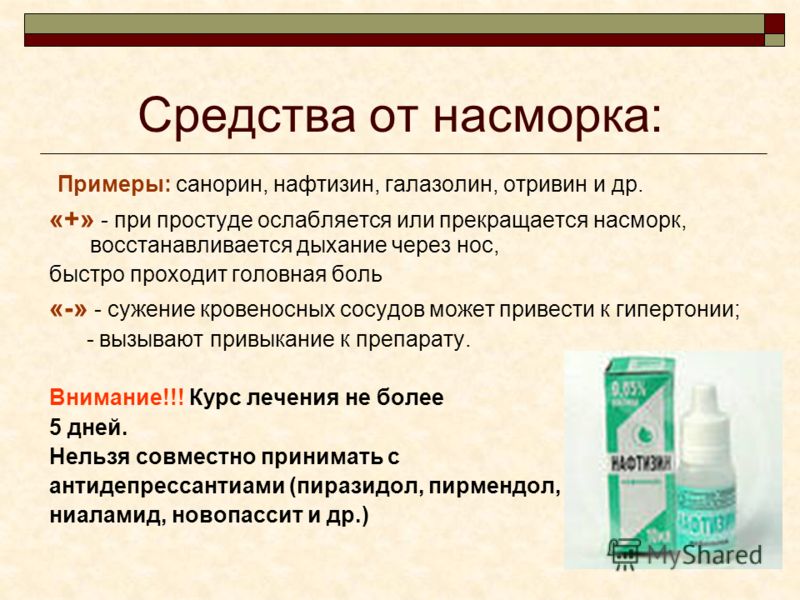
Complex preparations for the common cold: Examples: citramon, sedalgin, alka - seltzer, bicarmint, pentaflucin, teraflu, coldrex, maxicold, etc. “+” help to get rid of several symptoms of the disease: cough, runny nose, pain, fever, allergies. “-” - in case of overdose exacerbate gastric ulcer and stomach bleeding; - violate the function of the liver; - when used with antihistamines - increase drowsiness. Attention!!! Take only as directed by your doctor.

Effect of Citramon: Citramon should be drunk extremely rarely! The drug is not prescribed as an analgesic for people under 18 years old, as an antipyretic agent for children under 15 years old with acute diseases caused by viral infections, because of the danger of developing Reye's syndrome !!! (this is acute live liver dystrophy with acute development of liver failure ) The drug should not be taken for more than 3 days in a row, because may be side effects - nausea, vomiting, diarrhea, damage to the gastrointestinal tract, increased blood pressure, tachycardia, skin rash! You can not take pregnant and lactating women!
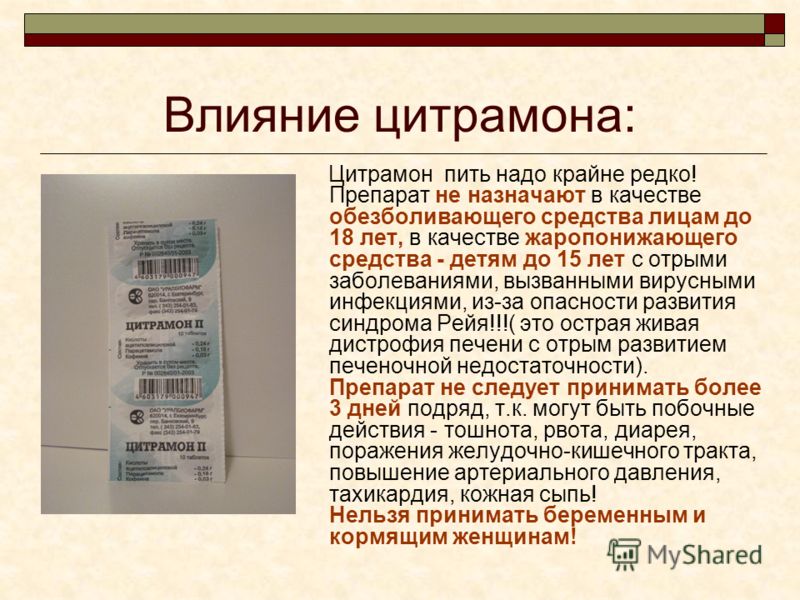
Conclusion: The proper use of drugs: drug treatment should be prescribed only by a specialist doctor according to the patient's disease; Do not self-medicate; take the drug strictly according to the instructions and according to the age of the patient; when taking certain medications, certain foods cannot be eaten, while taking others, it is necessary to increase the amount of drink; Do not use the drug after the expiration date; you need to store medicines in places inaccessible to children.
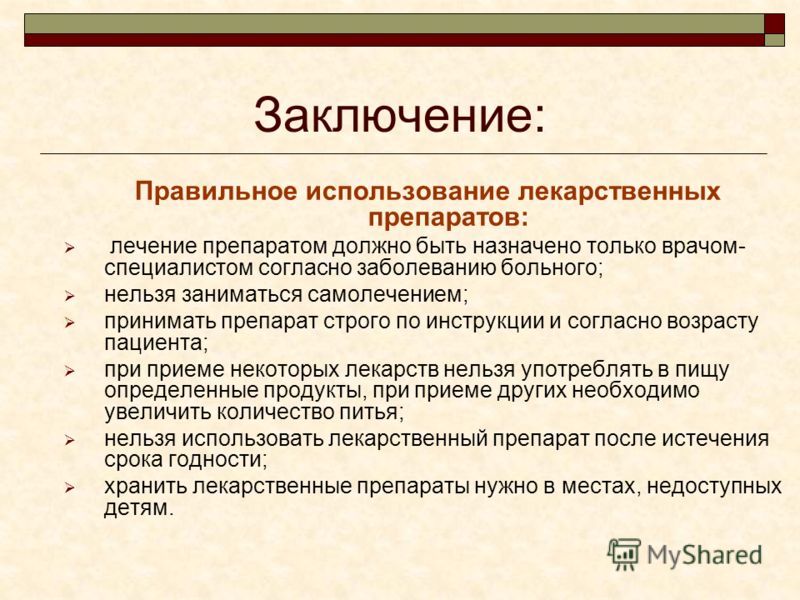
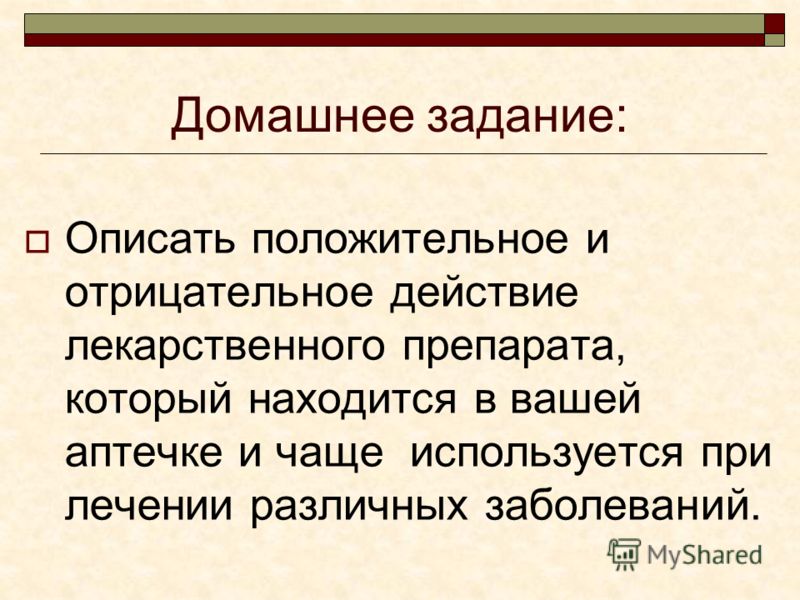
What do we offer under the guise of drugs? Why is life so cheap and medicines so expensive? Who profit from our fears and illnesses? Is medicine really a cure for the disease? Or vice versa?
Why can drugs be harmful? To answer this question, one must understand whether it is beneficial for drug manufacturers to cure the disease or not?
In ancient China, it was customary to pay a doctor only while a person was healthy. But the doctor was supposed to treat diseases for free. Thus, it was beneficial for the doctor to maintain the health of his charges. And if the ward is still ill, the doctor was beneficial to cure him as soon as possible.
Unfortunately, we have the opposite. But now it’s not even about doctors. In many cases, the role of the doctor comes down to writing prescriptions for medicines. Without the pharmaceutical industry manufacturing drugs, modern medicine is simply not possible.
But what are the goals and aspirations of the pharmaceutical industry? Does anyone really need people to heal with medication, or is the function of the pills completely different? And what to do to avoid harm from drugs that should treat us?
In contrast to ancient Chinese doctors, the pharmaceutical industry is simply not profitable to prevent disease. Diseases (especially chronic) are necessary for the existence, development and prosperity of the pharmaceutical industry. After all, the more sick people, the longer and harder they get sick - the more drugs are needed.
Let's see what are the goals and objectives of this industry, what are its methods and what are the consequences of taking drugs for people.
Who created the pharmaceutical industry?
How it all started well! The discovery of penicillin, the invention of smallpox vaccination, the invention of anesthesia ... These and other remarkable discoveries are commonly associated with the modern pharmaceutical industry. But is this industry created by scientists who made the above discoveries?
Not. The pharmaceutical investment industry was created and developed over a hundred years ago by the same financial groups that control the global oil and gas and chemical industries.
What makes the pharmaceutical industry profitable?
The pharmaceutical industry is an investment. Its main task is to increase shareholder returns. Improving the health of drug users is not and cannot be the driving force behind this industry. 
The pharmaceutical industry strategy includes the mandatory patenting of new drugs. This allows manufacturers to set an arbitrary price to maximize profits from the sale of drugs.
The basic rule is elementary - the greater the demand for the medicine, the greater the profit. Hence the next question ... who is the consumer of the pharmaceutical industry?
The consumer of pharmaceutical products (medicines) are people conditionally divided into two categories:
- Patients who seek medical treatment to recover, or at least alleviate their condition.
- Healthy, aspiring with the help of drugs to maintain their health.
What do sick people get from drugs?
Can the pharmaceutical industry allow its medicines to cure patients? Not. In this case, she will lose customers. It is vital for her to support and spread the disease. And there is nothing to blame her for - she simply strives to live and prosper. And sick people are her food.
What can the pharmaceutical industry offer patients instead of the desired cure? Not a cure, but a cure. A treatment that relieves or alleviates the symptoms of the disease, but does not destroy the disease itself.
In addition, many drugs with prolonged use (for which they are designed) cause additional diseases - that is, they create a new market for other drugs. For example, drugs that lower blood cholesterol levels cause cancer after several years of use.
What do healthy people get from drugs?
If everything is simple with patients (they are ready to pay any money to alleviate their suffering and prolong their lives), then healthy people must also be made to want to use the products of the pharmaceutical industry. Here, as in the first case, doctors come to the aid of the drug industry.
People are intimidated by various diseases (for example, a possible heart attack) and they are offered a carrot (for example, aspirin, the regular intake of which should help to avoid this heart attack).
The aspirin example is for older people. But young people and children also do not remain deprived of the attention of pharmaceutical corporations. They are offered to drink vitamins and get vaccinated (young parents are especially easily afraid of the terrible consequences that supposedly threaten their children with no vaccinations).
Is the pharmaceutical industry interested in our health or disease?
The answer to this question is obvious:
The spread of diseases increases the market for the pharmaceutical industry, and the prevention and cure of diseases reduces profit.
The eradication of diseases is incompatible with the interests of the pharmaceutical industry — it is tantamount to suicide.
Independent research results.
Fortunately for us, not all drug research is funded by their manufacturers, pharmaceutical companies. Two luminaries of French medicine, Dr. Philip Even and Bernard Debre, conducted a sensational investigation, which resulted in the shocking book "A Guide to 4000 Medicines: Useful, Useless and Dangerous."
It turned out that half of the drugs sold on the French pharmaceutical market cannot be called drugs at all. Another 20% are dubious drugs that are difficult for patients to tolerate or cause serious complications. And another 5% is pure poison.
The conclusion reached by the French doctors sounds fantastic, but it's true! Pharmaceutical corporations take advantage of our illiteracy, selling us “medicines” that are dangerous to health and life, in 75% of cases!
How do they do it? Yes, very simple. They take advantage of people's fear of death.
How serious can the harm done by these drugs be? Here are some examples of the harm of "simple" drugs:
- Flu medications causing suicidal thoughts.
- Antipyretic drugs that cause internal bleeding.
- Vaccines that make your children mentally retarded.
These dangerous drugs sold in pharmacies freely, without a prescription. Their names are familiar to everyone. Often we don’t even suspect how dangerous drugs can bring billions in profit to pharmaceutical companies. For their crazy income, we pay with our lives!
What do we offer under the guise of drugs?
This strange story that happened in 2006 shocked the whole of Japan. Several dozens of Tokyo residents committed suicide within 3 months (all suicides were under 18 years old). All those who committed suicide on the eve experienced malaise, as a result of a seasonal flu epidemic. It turned out that the cause of suicide of adolescents was the world famous drug for the flu!
It turned out that in Japanese adolescents, an antiviral drug causes a severe attack of depression, leading to thoughts of suicide.
No one was held responsible for the death of these children. The lethal drug company did not even pay compensation to the families of the victims.
550 billion dollars - This is the net profit of all pharmaceutical companies in the world for the year, according to official documents. However, there is an opinion that this figure is underestimated at times!
Most of this money is distributed among the ten largest players in the pharmacological market, which have monopoly rights to produce and sell thousands of medicines. Monopoly allows these companies to push medicine prices sky high.
All of these pharmaceutical corporations are managed by hired managers who are not actual business owners. This did not allow to find out who controls the pharmaceutical market - until the last moment. Only recently it became known that all pharmaceutical industry managed from one center.
According to an investigation conducted by reporters in the French newspaper Humanite, the entire pharmaceutical market is managed by a bank owned by the Rockefeller family.
They say that selling drugs is more profitable than drugs. However, they usually don’t agree MUCH BETTER. And let's calculate:
The sale of heroin on the black market brings drug traffickers $ 64 billion a year. This is 8.5 times less than the profit of the pharmaceutical industry (recall - 550 billion).
Not without reason did we compare the pharmaceutical business (the business on diseases) with the drug business. Where such money is at stake, human life is worthless.
It all started with deception.
It all started with Bill Rockefeller - the father of John Rockefeller, the founder of the legendary oil empire. Without a medical education, he traveled around the states, posing as the Harm of medicines: a doctor - a famous specialist in cancer diseases. For a wonderful cure for cancer, he gave out a mixture of oil and moonshine!
It was on this that he earned his first capital. So, with deception, the modern pharmaceutical industry began.
Aspirin, created at the end of the 19th century, is still the best-selling medicine in the world to this day. For a long time it was believed that this medicine is relatively harmless. However, it turned out that:
- Aspirin is associated with the development of a deadly disease - Reye's syndrome - which leads to severe damage to the brain and liver. Every third child in whom aspirin causes this syndrome does not survive.
- Aspirin causes internal bleeding.
- Aspirin irritates the gastric mucosa, which can cause an ulcer.
All these troubles can be avoided if instead of aspirin take ... ordinary raspberries!
The role of pharmaceutical companies in the outbreak of World War II.
In the biography of Adolf Hitler there is one little-known page. Namely: since 1933, his state of health has deteriorated sharply, he was sick a lot and often. It is known that Hitler suffered from pains in the stomach and he was injected with painkillers. But what exactly was he injected with? It will sound incredible, but the drug that the attending physician administered daily to Hitler may have had a huge impact on world history.
Beginning in 1936, Hitler was injected daily with Pervitin (a precursor to methamphetamine) - a narcotic substance, under the influence of which, as the Fuerrer’s circle noted, he became hysterical and had paranoia attacks. Hitler developed his ideas about how to achieve world domination in this state - under the influence of a drug.
Every year the dose of the drug increased. Pervitin is one of the most destructive substances for the human psyche. By 1941, the Fuhrer took 3 doses of pervitin per day, was extremely aggressive and unbalanced. In this state, he decided to attack the Soviet Union.
The world is mired in a bloody war. And pharmaceutical companies received a huge order for medicines for the military - pervitin as part of special chocolate, included in the mandatory diet of a German soldier!Drugs allowed to stay awake longer.
It was possible to get rid of the dependence caused by Pervitin only with the help of an even harder drug. For example, heroin, which could be bought at any pharmacy!
By the way, the gas used to kill people in gas chambers was produced by the pharmaceutical group IG Farben, which belongs to the two richest families of America - the Rothschilds and Rockefellers.
Everyone knows about the Nazi atrocities in concentration camps. But few people know that the famous Auschwitz concentration camp was a subsidiary and the main project of this pharmaceutical concern. At Auschwitz, the infamous Doctor Death, Josef Mengel, experimented with unstudied medications on captives - adults and children. The experiments were funded by the same pharmaceutical concern.
After the war, the controversial concern was divided into 12 pharmaceutical companies. And now they continue to sell us medicines manufactured by these companies, and, in fact, by the same criminal concern ...
Human Experiments TODAY
The National Security Memorandum (NSSM-200), a secret document released from the pen of a member of the US government by Henry Kissinger in the 70s, states that developed countries should promote depopulation in third world countries, that is, forced reduction of their population.
Already in the 1972nd year, plans for depopulation began to be actively implemented. A landing team of doctors from the World Health Organization was sent to Africa. The official reason for this mission is vaccination against smallpox to several tens of thousands of residents of the central regions of the Black Continent. However, there is a suspicion that volunteer doctors had completely different goals.
In 1990, a document was declassified, proving that shortly before this event, the US government invested $ 10 million in the development of a synthetic biological agent that can damage and destroy the human immune system. The coincidence is surprising - today the same regions in which doctors carried out the “vaccination” back in 1972, WHO officially calls the "African AIDS belt." The African AIDS Belt includes Zambia, Mozambique, Botswana, Swaziland, Namibia and several other African countries.
Many new, previously unknown and extremely dangerous diseases were first reported on the African continent: AIDS, Ebola, SARS ...
Medical experiments on human beings are still ongoing. People act as guinea pigs.
It is no secret that the work of most volunteer doctors practicing in African countries is funded by grants that are generously distributed. pharmaceutical giants.
In 2001, a retired British intelligence officer, John Mikare, decided to publish shocking data on the global pharmaceutical business. In his book The Faithful Gardener, he revealed the conspiracy of the world's largest pharmacological corporations, which are testing the latest deadly drugs on the inhabitants of the poorest countries in Africa.
Experiments on living people are not cheap. In Western countries, with volunteers who decide to test the effects of new drugs, they conclude contracts for thousands and even tens of thousands of dollars. Plus, the life of a volunteer is insured for about two million dollars. If something goes wrong during the experiment, the pharmaceutical company will be bombarded by insurers.
But clinical trials are a prerequisite for a new drug to enter the market. Therefore, drug manufacturers are looking for human material for experiments outside prosperous countries. For example, in the same Africa. Here, as in the concentration camps of fascist Germany, the field for experimentation is enormous. And most importantly - almost free.
In 1996, the world was shocked by the news: an epidemic of meningitis erupted in Nigeria. 150 thousand sick, 15 thousand dead. Doctors from all over the world were urgently sent there. Among those flying to Nigeria, there are representatives of the American pharmaceutical giant.
Instead of the traditional treatment, doctors - representatives of the pharmaceutical giant - offer treatment with the experimental drug Travan. By deception they force people to sign a consent - patients do not know English and do not understand what they sign.
It turned out that the drug, temporarily relieving the suffering of patients with meningitis, affects everyone differently. In a third of patients taking it, this medicine caused internal bleeding, which in many cases ended in the death of the patient. By the time the dangerous side effects of the drug began to appear, about a thousand Nigerians managed to get the medicine.
The experiment failed: 11 people died, hundreds remained disabled. The income of the company that killed the unfortunate people, these results did not affect.
Surprisingly, in 2013, this story was almost repeated one in one in the African Republic of Chad. The “Benefactors” in white coats brought the free, but not yet officially approved and unlicensed Menafrivac vaccine, developed with the support of the renowned Bill and Melinda Gates Foundation. As a result of this "charity" 50 people were paralyzed.
The African continent remains the main testing ground for pharmaceutical corporations to this day.
Cheap analogues of famous drugs
In pharmacies, inexpensive drugs are sold - analogues of the advertised drugs for headaches, flu, bloating and other common ailments or viral infections. Their names are not promoted and they are sold in packages without company stickers. But they cost several times cheaper. These cheap counterparts (the so-called "generics") are often offered by pharmacists with the words that this medicine works the same way, but costs 2 times cheaper. People, as a rule, trust the advice of a pharmacist.
But are these drugs really identical? The issue of drug interchangeability is a subject of debate that has been going on for decades. Generics contain basic components similar to proven originals. But the rest of the ingredients are different. This difference can dramatically affect the quality of the drug, its therapeutic action and side effects. “Generics” make up 80% of the range of medicines in Russian pharmacies.
A prescriber works directly with pharmaceutical companyinterested in promoting their products. Also a pharmacist - he is interested in the sale of goods. Be careful when choosing this or that drug!
Medications Cause Disease
A retired intelligence officer claims that the leaders of the pharmaceutical business specially formulate drugs so that they cause even more serious illnesses. Patients are forced to pay a lot of money for the opportunity to recover from complications caused by the drugs themselves.
The sensational discovery was made by the scientists of the Israeli medical center Hillel Yafe. It turned out that the usual anti-inflammatory drugs, freely sold in a pharmacy without a prescription, can lead to kidney disease. This primarily concerns the elderly, children and adolescents.
And there are dozens, if not hundreds of such examples:
- blood clot medications can trigger acute infections,
- acne preparations can cause eye diseases (this was found out after examination of 15 thousand volunteers),
- hormonal drugs (especially early generations) can cause thrombosis and even cancer.
Five safety rules when going to the pharmacy:
- Do not use new medicines that have been on the market for less than six months. All new drugs are being tested on a small group of people. The consequences of their use are not fully understood. Effects prolonged use - not studied at all.
- Before taking a popular medicine for colds, try a traditional medicine prescription. 1 tablespoon of dried raspberries, put in a thermos and pour 150 ml of boiling water. Let it brew for 2-3 hours. Add 2 tablespoons of honey and stir until completely dissolved. Better to take at night.
- Prefer original medicines to “generics” - cheap counterparts.To distinguish one from the other, ask the pharmacist for a certificate stating the name of the country of manufacture, the name of the supplier company, the type of packaging of the product (ampoules, tablets, capsules), the batch number (must match the batch number on the package) and the seal organization that issued this certificate.
- Do not trust drug advertising. Advertising always exaggerates the effectiveness of the drug and is silent about its negative properties. Do not buy the medicine on the recommendation of a pharmacy employee without consulting a doctor.
- Drink less medicine!
Can the pharmaceutical industry help cure a disease?
The pharmaceutical industry in its current form cannot deal with most diseases, since they are the source of its income. But this does not mean that drugs, in principle, are not able to defeat the disease. It just should be beneficial for someone ...
In order for medicines to cure diseases, rather than mask symptoms, simultaneously causing new diseases, it is necessary that there is no conflict of interest described above. It is necessary for drug manufacturers to cure diseases.
Is this possible in reality? I have no idea. Now the situation is such that medicines should be used with extreme caution.
Only full-fledged natural food can be harmless, which fully satisfies the body's need for energy and allows storing it for the future.
It is the deficit in the human diet of natural food that led to an avalanche-like increase in the number of diseases. Statistics show that those who constantly take medications are most affected. Any disease has an “energetic” cause.
Nature gives life. She also gives health. In conclusion, I want to recall the wise advice of Hippocrates: “Food should be your medicine, and medicine should be your food.”.


